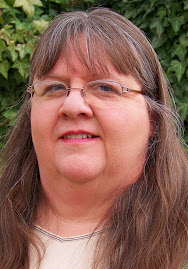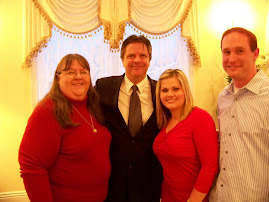Chapter 1
August 2006
Some people believe angels are real. Some believe they walk among us. On August 7, 2006, on the fourth floor of Primary Children’s Hospital, angels were there to comfort me on the scariest day of my life.
Jake and I, Jake’s mom, and my parents were gathered in a large room and began our vigil, as the team of doctors—six surgeons, two anesthesiologists, one radiologist, two urologists, and twenty-five to thirty support-staff—worked in shifts on Maliyah and Kendra, our conjoined daughters.
Jake’s dad, Lamar, didn’t live to see this day, but both Jake and I had a strong feeling he was an angel there with us, watching out for the girls. At a time like this, the line is thin between life and death. In addition to Lamar, other angels walked among us. The only time I’d ever felt so surrounded by guardian angels was in the celestial room of the Salt Lake City temple.
Today, their presence gave me a calm feeling that all would be well.
I was grateful for the assurance that our decision to separate Kendra and Maliyah had been right. For months now, medical experts had debated whether it was ethical for us to subject Maliyah to the additional risks the surgery would bring.
Would she be able to survive? I wanted to stay removed from the debate, but since the topic was about our children, and ultimately a choice Jake and I had to make, it was hard to close our hearts and minds completely to the experts’ concerns. We wanted what was best for Kendra and for Maliyah. We wanted them to have the chance to live a normal life, and the doctors agreed—that came only with separation—the reason we were gathered at Primary Children’s today.
Letting the girls go into the operating room this morning was almost more one than I could bear. Only those who have given birth to conjoined twins can truly understand the agony that comes with making the decision and the pain that grips your heart when separation day finally arrives.
The national media had been delivering Breaking News reports of the progress of the surgery the entire day. People from our church brought food to the waiting room, though I had a hard time eating anything. Other family members came and went—at one time thirty people waited with us.
Dr. Rebecka Meyers, who was the coordinating surgeon, and Dr. Michael Matlak, the pediatric surgeon, were in the operating room most of the time. They had given us a detailed outline of what stages the surgery would take throughout the expected twenty-four to thirty-six hour procedure. They promised we would be updated every hour about how things were progressing.
“Separating twins is never standard,” Dr. Matlak warned us. “There’s always a chance something will go wrong.”
We didn’t want to hear that, nor did we want to be alone. Our family had scheduled shifts to wait with us, always making sure that someone was home with the other three children.
And, of course, we had the angels.
About ten hours into the operation, the hourly report was late, and I started to panic. Why wasn’t someone coming? Was something wrong? I’d had panic attacks before and I recognized the signs. I tried to breathe deeply to calm myself, but that didn’t work. As a matter of fact, it got worse. I couldn’t breathe at all. I started freaking out.
Jake’s niece-in-law, Monica, and my friend, Mary, seemed to sense I was struggling and came to help me.
“Something . . . must be . . . wrong,” I gasped. I didn’t mean with me; I meant with Kendra and Maliyah.
“Put your head down, Erin,” Monica said. “Try to relax.” She stood behind me, lifting my hair away from the nape of my neck and fanning her hand to cool me off.
Mary offered a cup of water. “Sip this.”
After a couple of minutes, my breathing became steady enough that Jake was able to give me a blessing. As an elder in our church, Jake held the priesthood authority to perform this ordinance. He and my father laid their hands on my head, and Jake offered a beautiful prayer, asking our Father in Heaven to renew my sense of peace as the surgery continued.
Once Jake was finished with the blessing, my racing heart slowed, and I started to sort through everything that was happening. The calm assurance I felt earlier returned.
Moments later, Dr. Meyers came to tell us they had made a discovery—the girls shared something more than everyone had originally thought. They shared more than their lower body, skin, pelvis, and the organs in that region.
The twins shared a pericardial sac.
Kendra and Maliyah were conjoined at the heart.
Subscribe to:
Comments (Atom)



